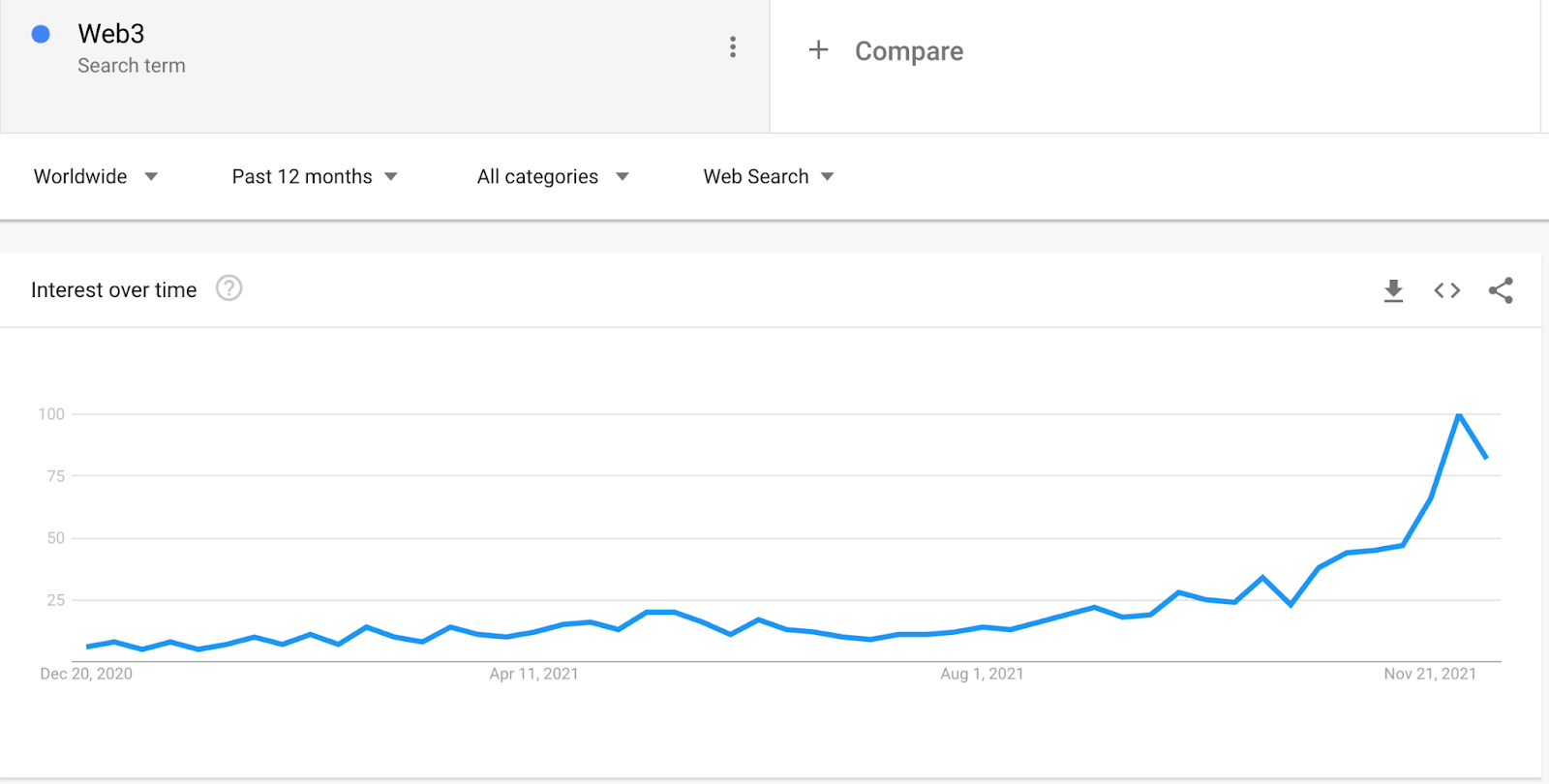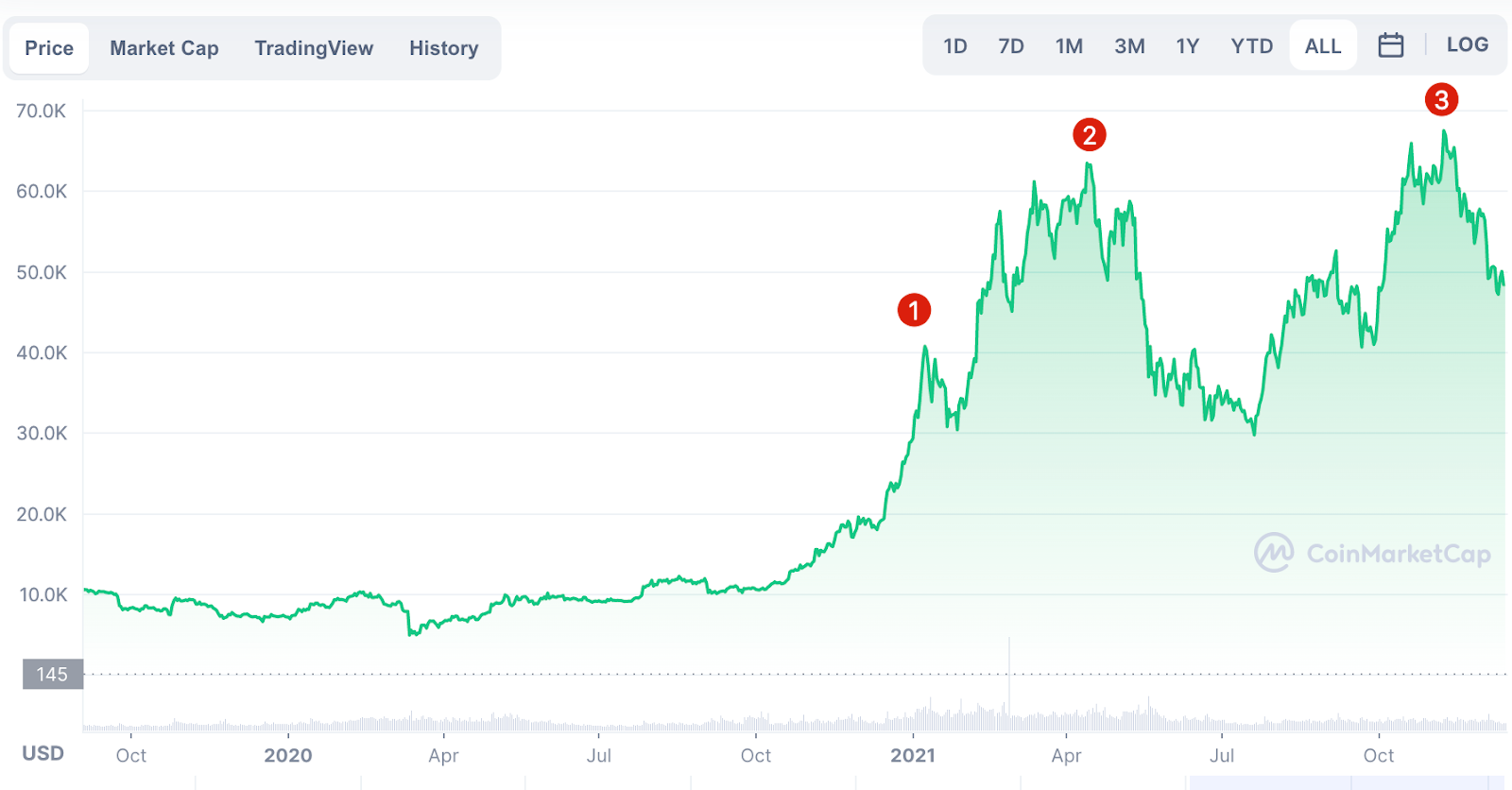Summary
2021 is a real breakthrough year for cryptocurrency use cases. Technologies like NFTs and the Metaverse have become mainstream news, and blockchain adoption is increasing. In terms of supervision, this year there will be both increased supervision and support.
El Salvador adopts Bitcoin as legal tender. In the United States, the Securities and Exchange Commission (SEC) allowed the first Bitcoin ETFs to be listed on the Chicago Mercantile Exchange. Canada has also launched its own Bitcoin ETF, which is an important part of the adoption of Bitcoin ETFs by institutional investors.
NFT has achieved breakthrough success this year, with record sales and exposure. Cryptocurrency was a niche market just a few years ago, but now it has become a widely discussed topic. Binance launched its own NFT to meet demand, and Fortune 500 companies are increasingly using and investing in NFTs.
NFT also plays a certain role in the Metaverse, which is another hottest topic in 2021. Tech giants and small developers alike are using cryptocurrencies to power the economy and build a connected 3D world. This trend is also related to Web3, the concept of decentralization that is driving our future interactions on the Internet. Several large capital investment firms have expressed support this year for the implementation of blockchain in our online interactions, data, privacy and finances.
Binance Fan Tokens are also popular at sports clubs such as FC Porto and S.S. Lazio. Most of the 2021 sales are already oversubscribed, and users can enjoy blockchain-based new fan discounts.
At the end of the year, Bitcoin reached a new all-time high of nearly $70,000.
Introduction
For the cryptocurrency world, this year is undoubtedly a year full of surprises. From NFTs that capture the imagination of creators to Bitcoin’s soaring record highs, 2021 has many highlight moments. So while everyone seems ready to jump into the blockchain-powered metaverse, let’s not forget about everything else happening this year.

Cryptocurrency Regulation
Cryptocurrencies have been gradually regulated over the years . But in 2021, not every government has the same goals. Some countries, like El Salvador, want to embrace this technology and benefit by integrating it into everyone’s daily lives. Other countries and regions have tightened taxes and treated cryptocurrencies as the subject of strict controls.
El Salvador
On June 5, 2021, El Salvador announced that Bitcoin would become the country’s legal tender, which made headlines around the world. Starting September 7, 2021, all businesses will be required to accept BTC as payment for goods and services. This makes El Salvador the first country to officially adopt Bitcoin as a payment method. To celebrate this important occasion, the government gave away $30 worth of Bitcoin to every citizen who downloaded the government’s digital cryptocurrency wallet.
El Salvador pointed to Bitcoin as a way to reduce the fees people pay on remittances, a big sector of the economy as many families receive payments from abroad. Most Salvadorans also lack access to financial services, and blockchain would be a possible solution to help those who do not have bank accounts. Globally, some outside commentators see the move as a way for El Salvador to reshape the country's image. The country was once notorious for its criminal gangs and underground economy.
US Stocks in the United States
In addition to the launch of Bitcoin ETFs (traded open-end index funds), there are also some regular updates in the areas that the SEC focuses on. Notably, the country is also discussing stablecoins and decentralized finance (DeFi), as they face more regulatory challenges than cryptocurrencies such as Bitcoin. It is very likely that we will see major announcements regarding regulation in both areas over the next year.
Bitcoin ETF
Some people believe that the creation and regulation of Bitcoin ETFs are directed towards traditional investments The author introduces the key to cryptocurrency. Unlike private investors, highly regulated institutions cannot just open their wallets and start trading cryptocurrencies. Following lengthy discussions with regulators, Bitcoin ETFs were launched in Canada and the United States in 2021. ETFs allow someone to expose their portfolio to Bitcoin without holding Bitcoin assets. Many Bitcoin ETFs, such as BITO in the United States, actually use BTC futures as the underlying asset of the ETF.
The SEC favors futures ETFs linked to existing Bitcoin futures on the Chicago Mercantile Exchange (CME). These derivatives are highly regulated in the United States, allowing ETFs to take advantage of them. There are currently three U.S. ETF options, and a physically backed fund may be launched at some point in the future.
Non-fungible token (NFT)
Although NFT is not new in the blockchain world , but this year was the year when its success achieved a breakthrough among the general public. In March, we conducted the world's most expensive NFT sale of Beeple's "Everyday: The First 5,000 Days" at a price of US$69 million. In addition, the popularity of NFT games is also growing day by day.

Establishing original authenticity can be a challenge, but blockchain allows for the creation of verifiable methods for digital rarity. It solves the "copy-paste" problem we encounter when proving the authenticity of digital assets and documents. With such vast use cases and developers experimenting with NFTs across industries, we can expect some big news in 2022 and beyond.
Metaverse
After the massive start of NFTs, 2021 ended with another huge trend: the Metaverse. So far, the biggest reason for the Metaverse's popularity is the interest of major technology companies. On October 28, Facebook changed its name to Meta and outlined its vision for a 3D virtual world that connects multiple aspects of our lives. This is also evident from the increased popularity of related searches on Google Trends.

Meta is not the only company with this idea. The concept of the metaverse has existed for many years, and many crypto projects have created their own metaverse worlds. Decentraland, for example, lets you explore a 3D world, own virtual land, and even make a living through its earn-as-you-play mechanism. Blockchain games like Axie Infinity also allow you to combine gaming with ways to earn a steady income. So while we don't yet have a unified metaverse, the parts are coming together.
Web3
Web3 is a new Internet technology based on public blockchains such as Ethereum or Binance Smart Chain. Version concept. The term was originally coined in 2014 by Gavin Wood, co-founder of Ethereum and founder of Polkadot. However, it was not until this year that the concept began to gain traction, especially around October this year when large investment firms such as Andreessen Horowitz expressed support for the concept.

The goal of Web3 is to use decentralization as the basis for the new development of the Internet. But how is it different from the Metaverse? Metaverse wants to create an interconnected 3D world. Web3 focuses more on how we use the Internet in its current form to control our identity, personal information, and interactions. Websites and apps will also leverage big data in meaningful ways to enhance online experiences.
NFTs, DAOs (Decentralized Autonomous Organizations), and DeFi all hope to become an important part of how we use the Internet, just like email, PayPal, and 2FA (two-factor authentication) are Web 1.0 and An important part of Web 2.0.
Binance Fan Token
On October 21, 2021, Binance through its Launchpad partnered with S.S. Lazio partners to launch first-ever Binance Fan Token. Holders will receive exclusive privileges such as the right to fan-vote on sports team decisions, the opportunity to earn NFTs, and new ways to interact with their favorite sports teams.
While 2021 is a big year for Binance Fan Tokens, it is not the origin of Fan Tokens. Fan tokens already exist with the launch of the JUV token by Juventus at the end of 2019. These tokens allow holders to interact with their favorite teams and earn unique fan token benefits.
Through Binance New Coin mining, users can stake BNB and obtain some Binance fan tokens. So far, the sales have been a huge success. For example, LAZIO had 225,583 participants commit to subscribe for 8,110,631.97 Binance Coin (BNB), meaning the auction was oversubscribed 1,005 times.
Cryptocurrency markets and Bitcoin hit all-time highs
After a strong rally in 2020, Bitcoin The coin reached new all-time highs again in 2021, hitting three peaks. Let's take a look at this chart.

The first high point shows that the rally at the end of 2020 continued into January 2021, with a peak of approximately $41,000 . After fears of entering a bear market and subsequent correction, Bitcoin continued to rise and reached $63,000 (2nd high) in mid-April. In June, the market received negative news for cryptocurrencies, causing approximately half of Bitcoin mining capacity to be taken offline within a few days.
Nonetheless, Bitcoin has rebounded since reaching a new ATH of around $69,000 in November. Let’s look at the new ATH of some of the other largest cryptocurrencies by market cap.
Cryptocurrency | All-time high ( Approximate USD value) |
BNB | $686 |
Ethereum (ETH) | $4,878 |
| Solana (SOL) | $260 |
DOGE | $0.7316 |
Cardano (ADA) | $3.09 |

Summary
A continuing theme in 2021 is the adoption of new blockchain use cases such as NFTs and the Metaverse. By now, people around the world are becoming more familiar with cryptocurrencies like Bitcoin, mining, and cryptocurrency trading. This makes 2021 especially exciting because when it comes to cryptocurrencies, newspapers around the world are no longer just reporting on cryptocurrency price increases. Many of the trends we discussed lay a good foundation for 2022 and give us a lot of new expectations for the next 12 months.
 Forum
Forum OPRR
OPRR Finance
Finance
 Specials
Specials
 On-chain Eco
On-chain Eco
 Entry
Entry
 Podcasts
Podcasts
 Data
Data
